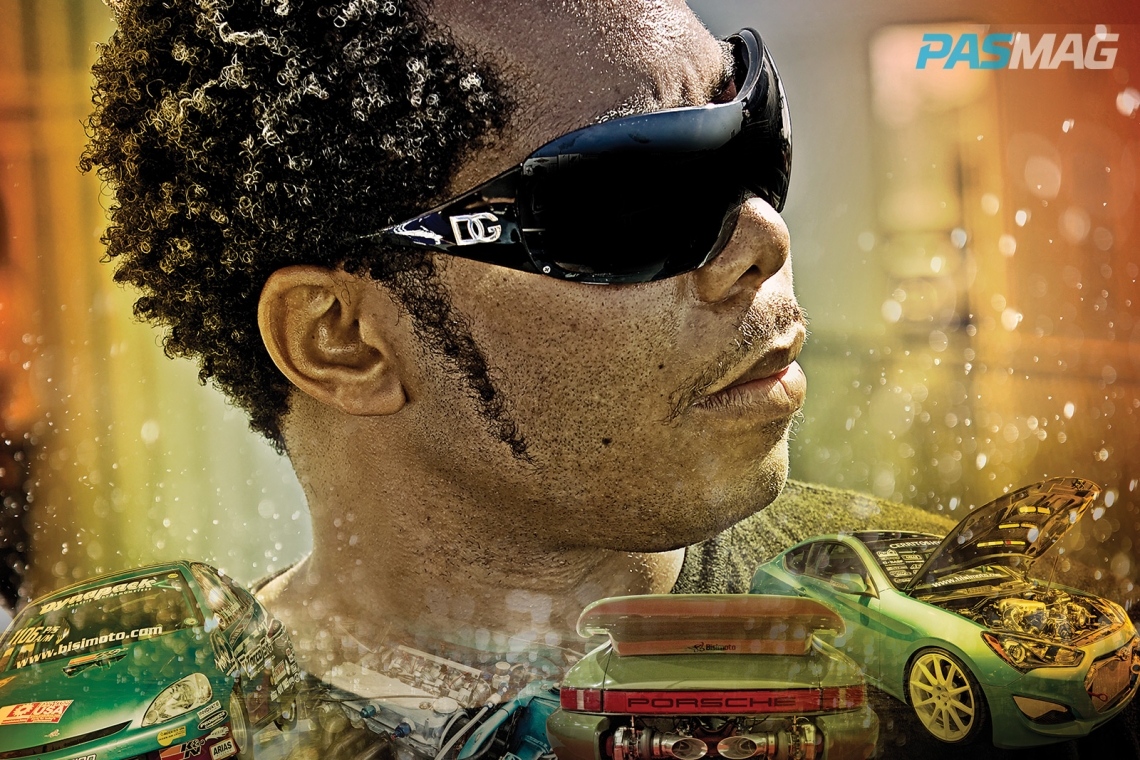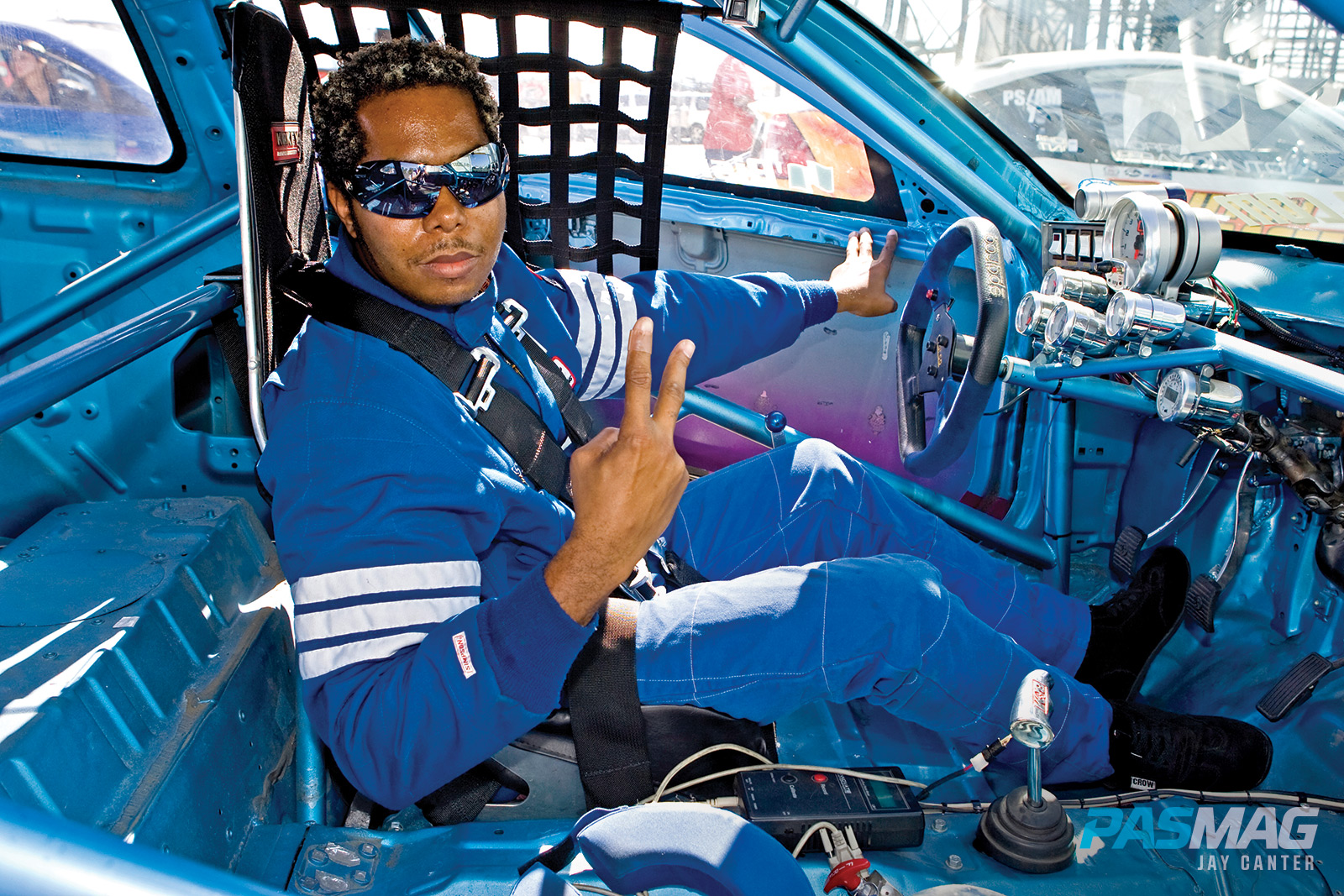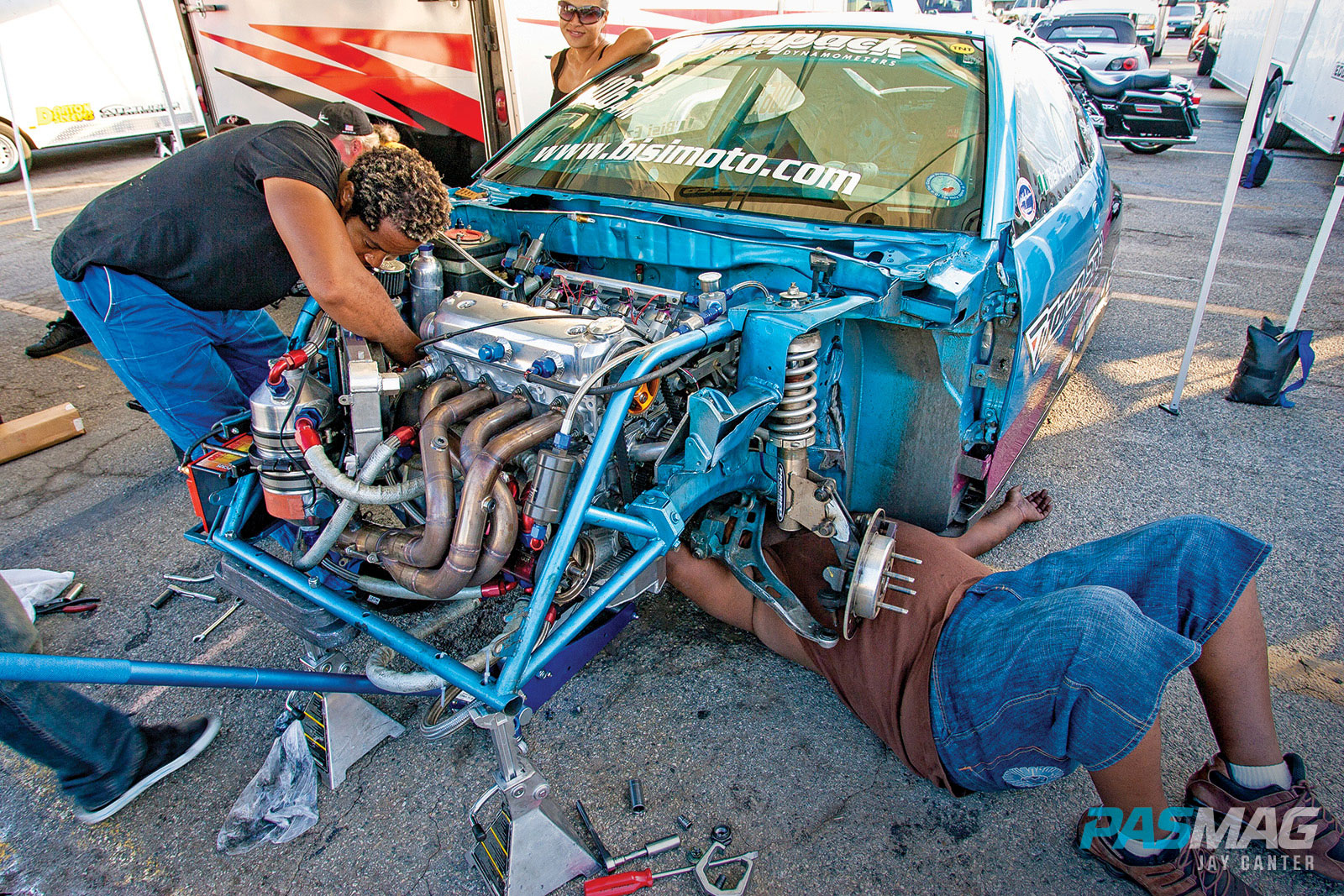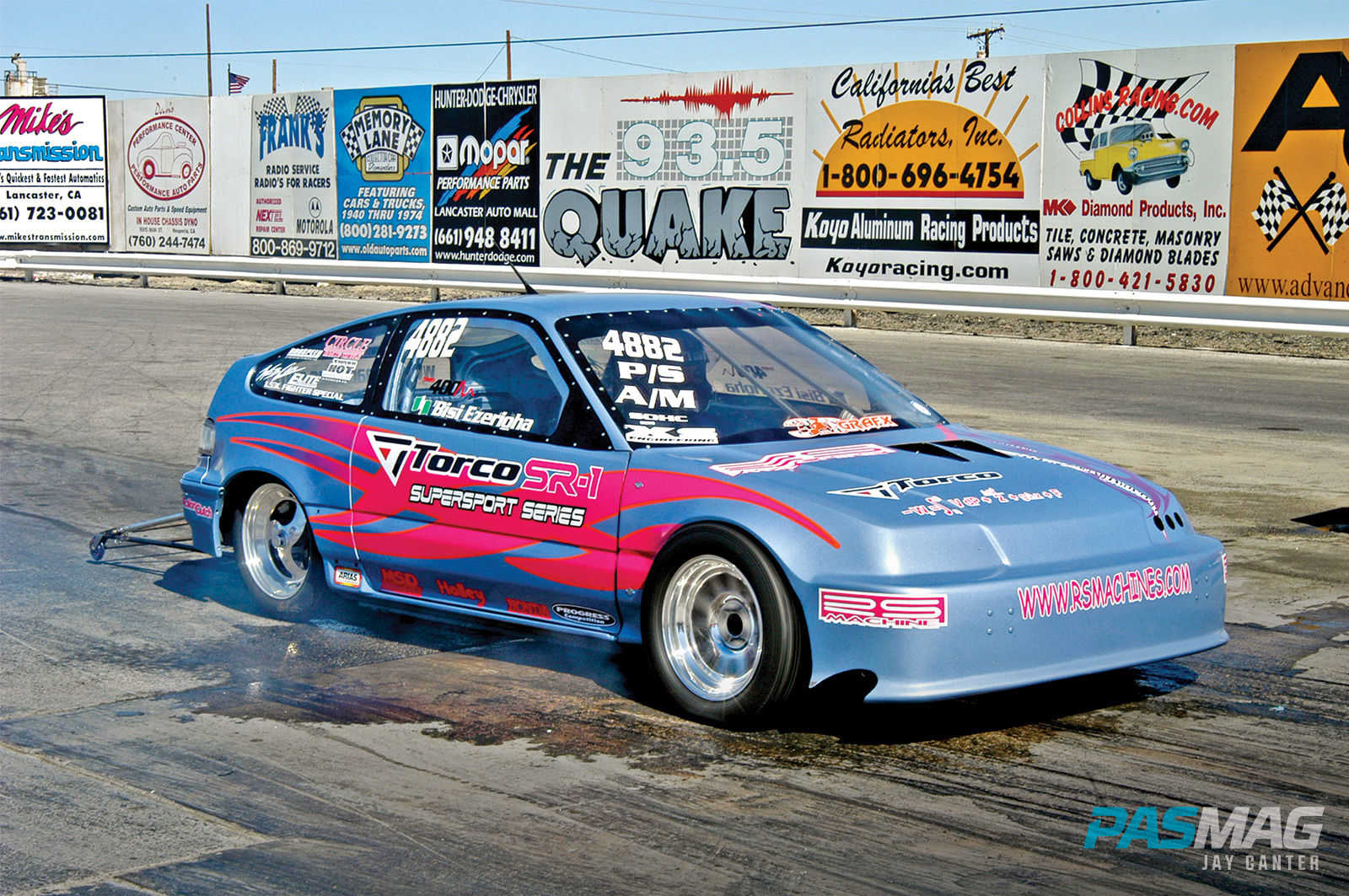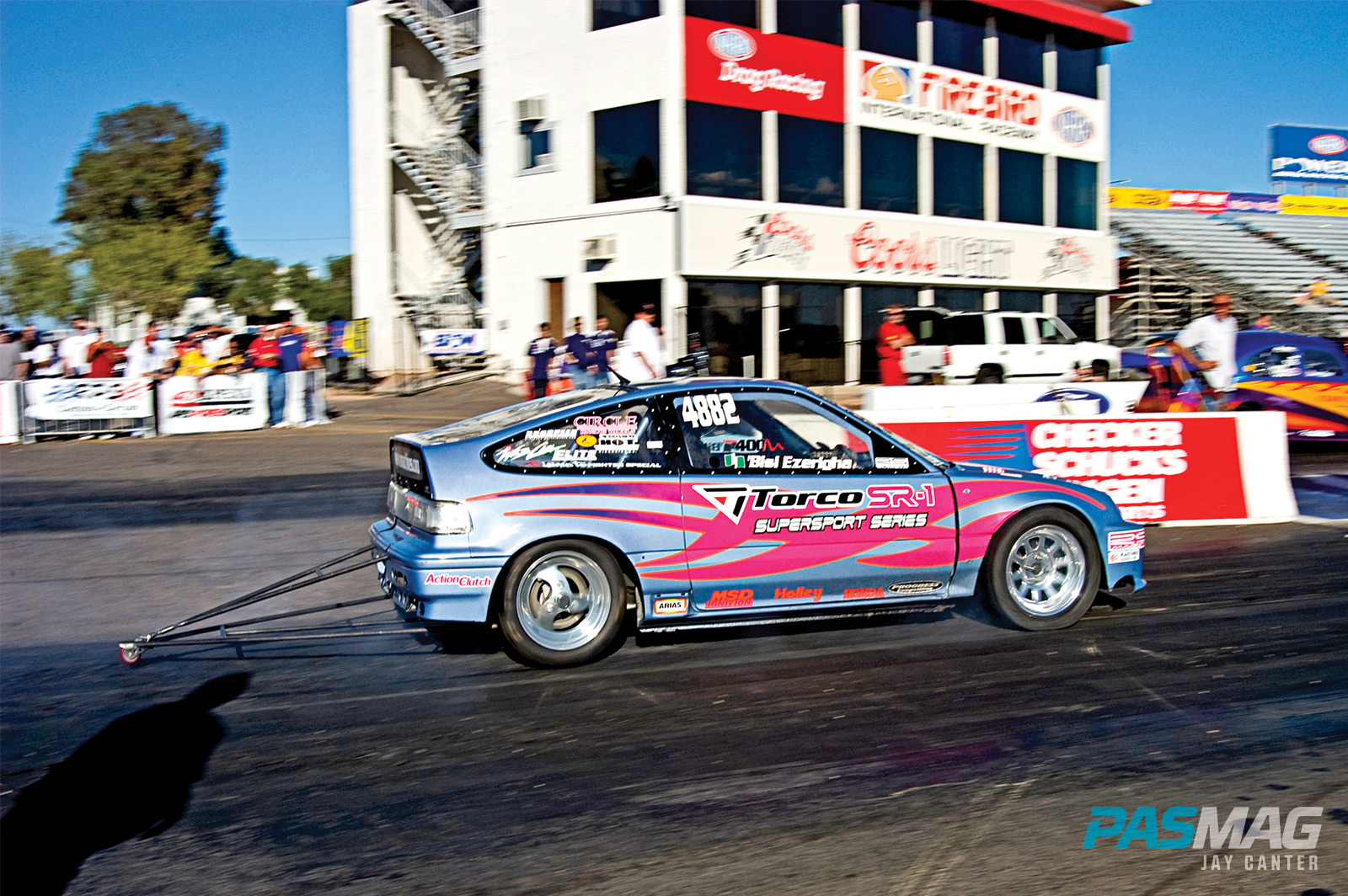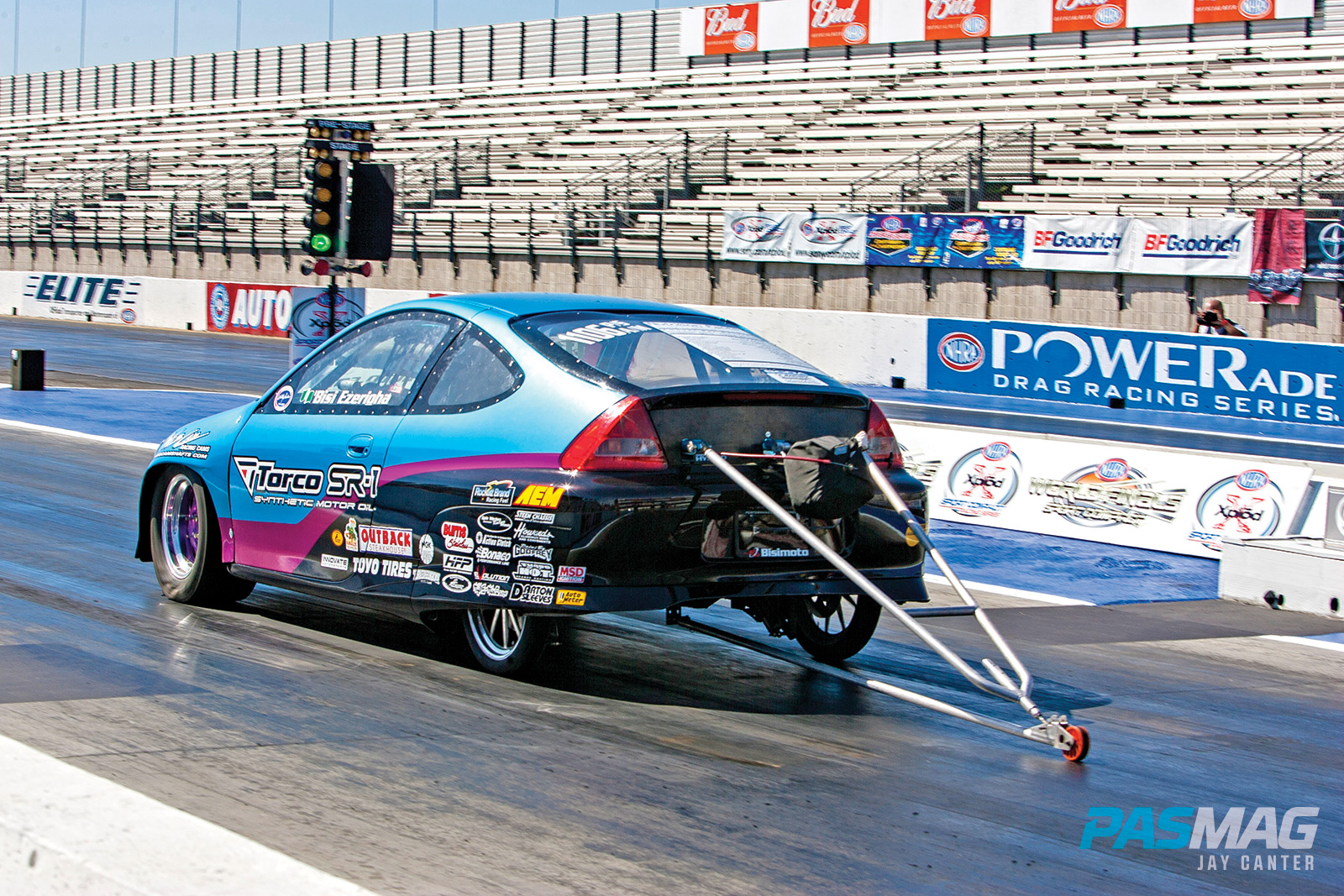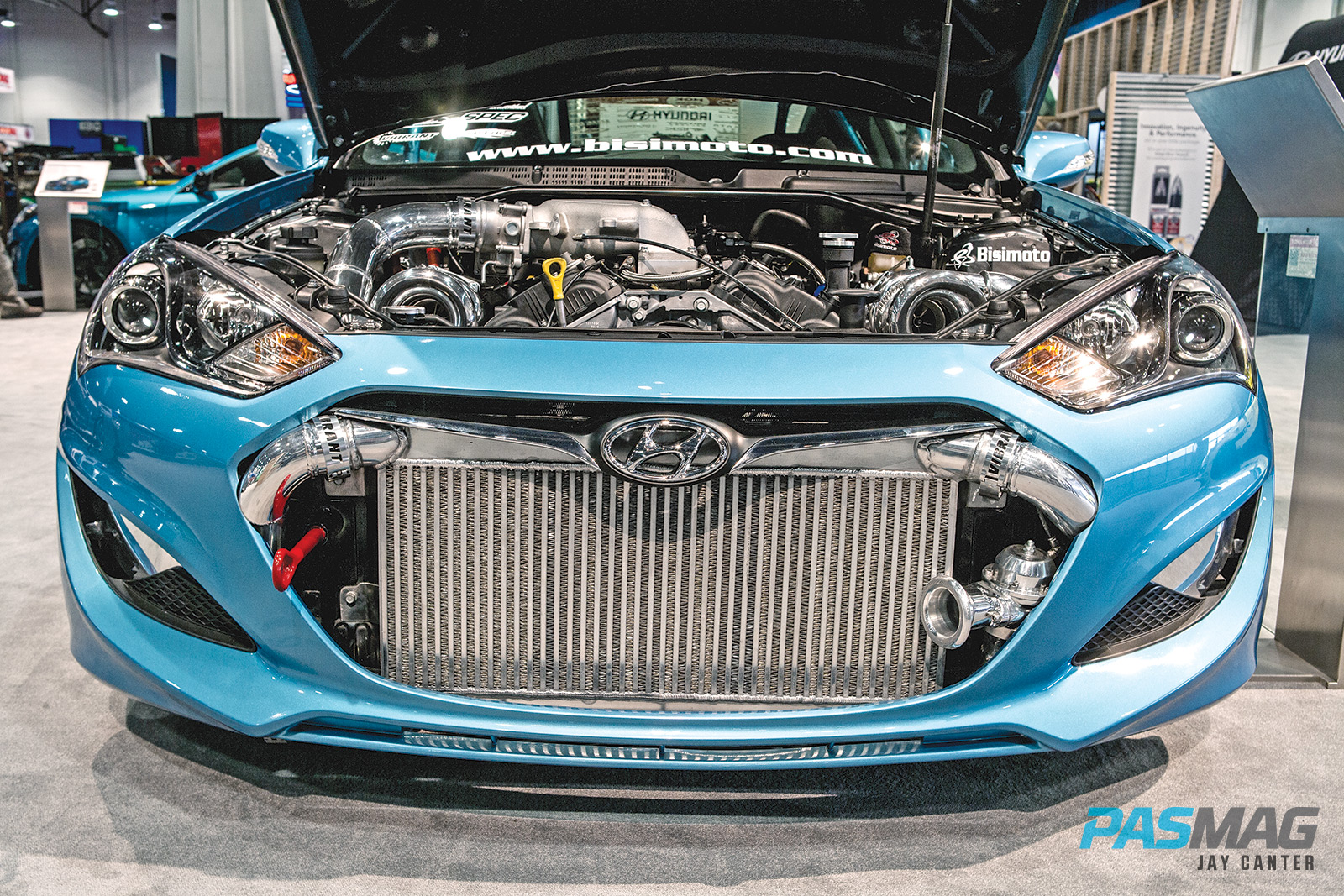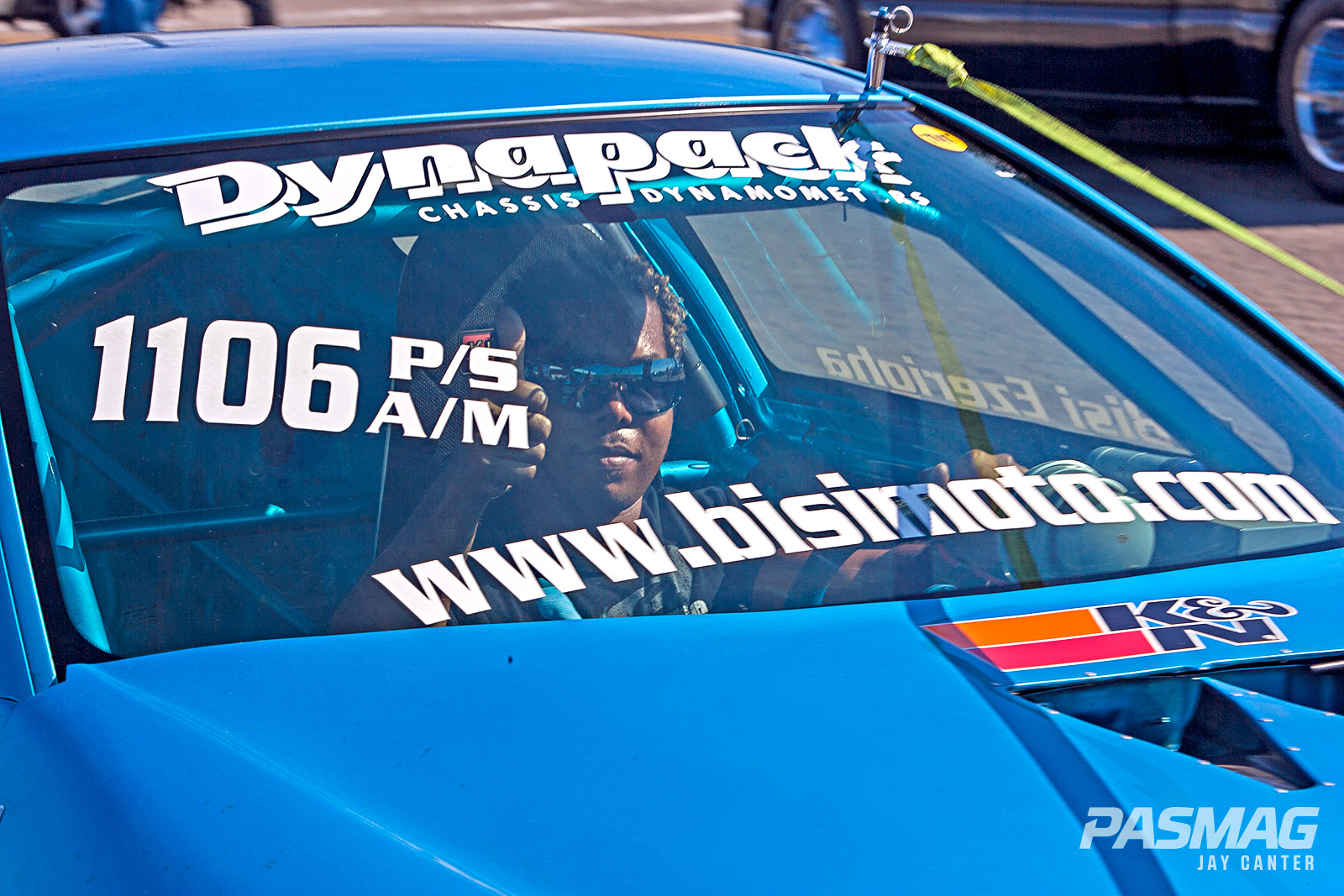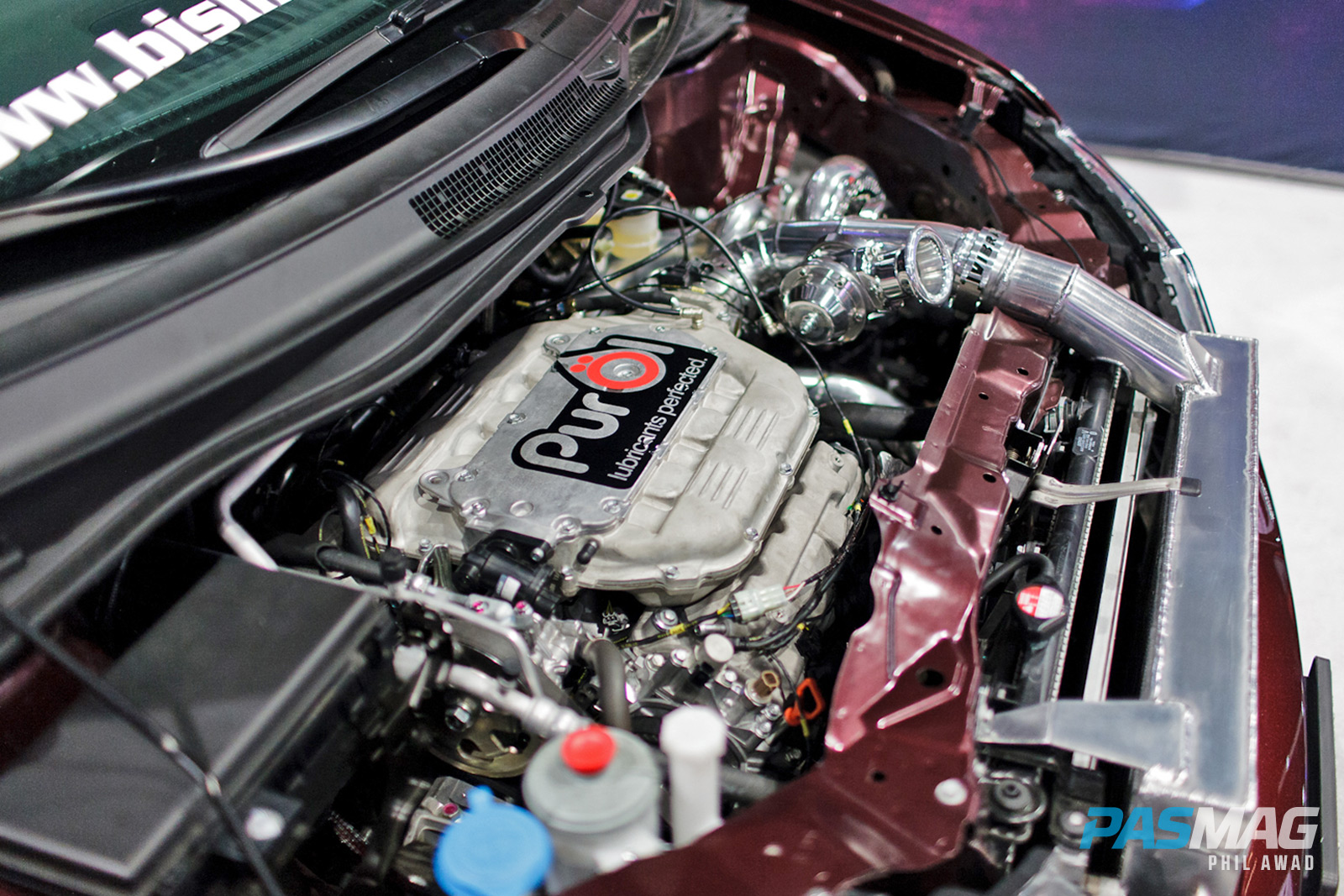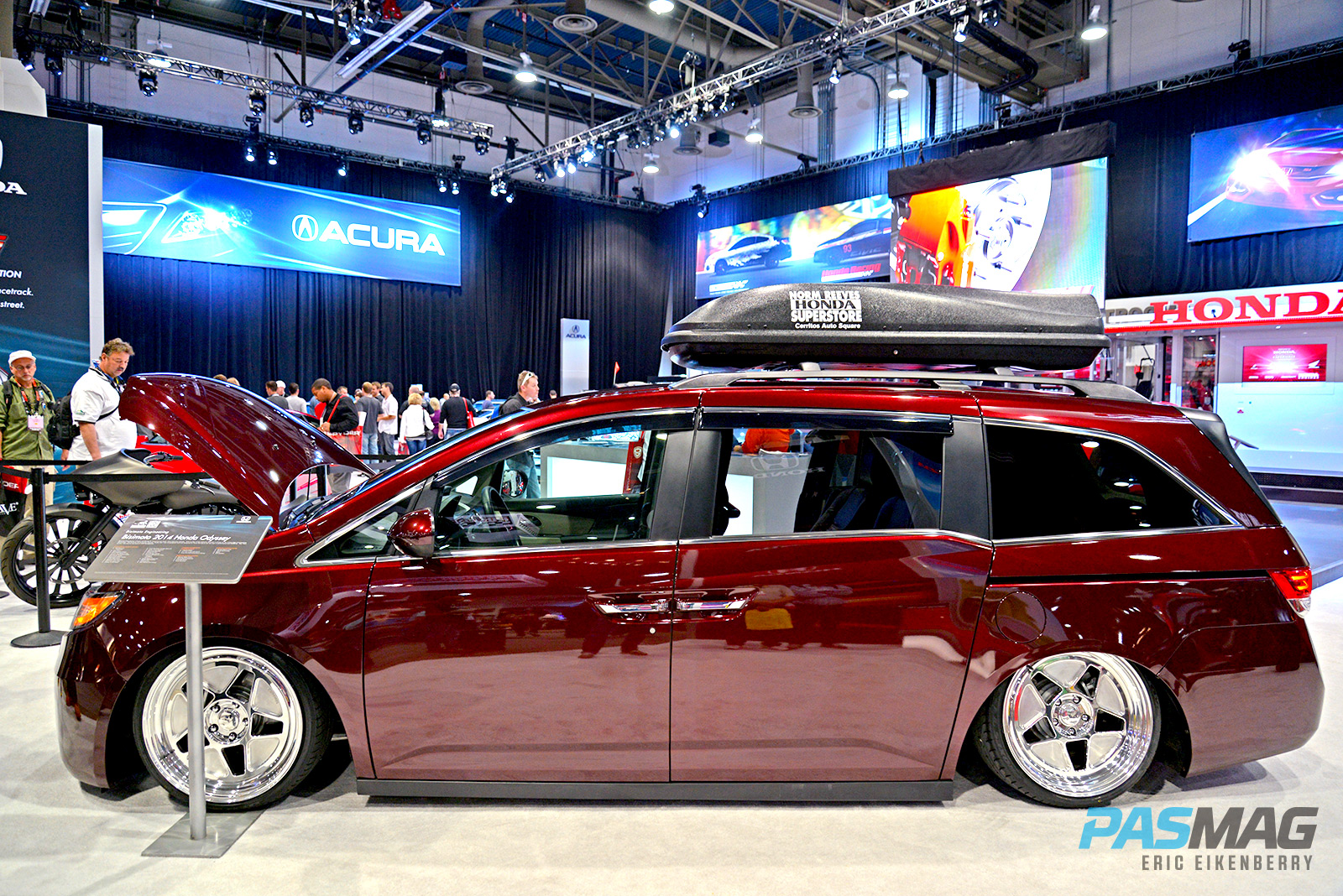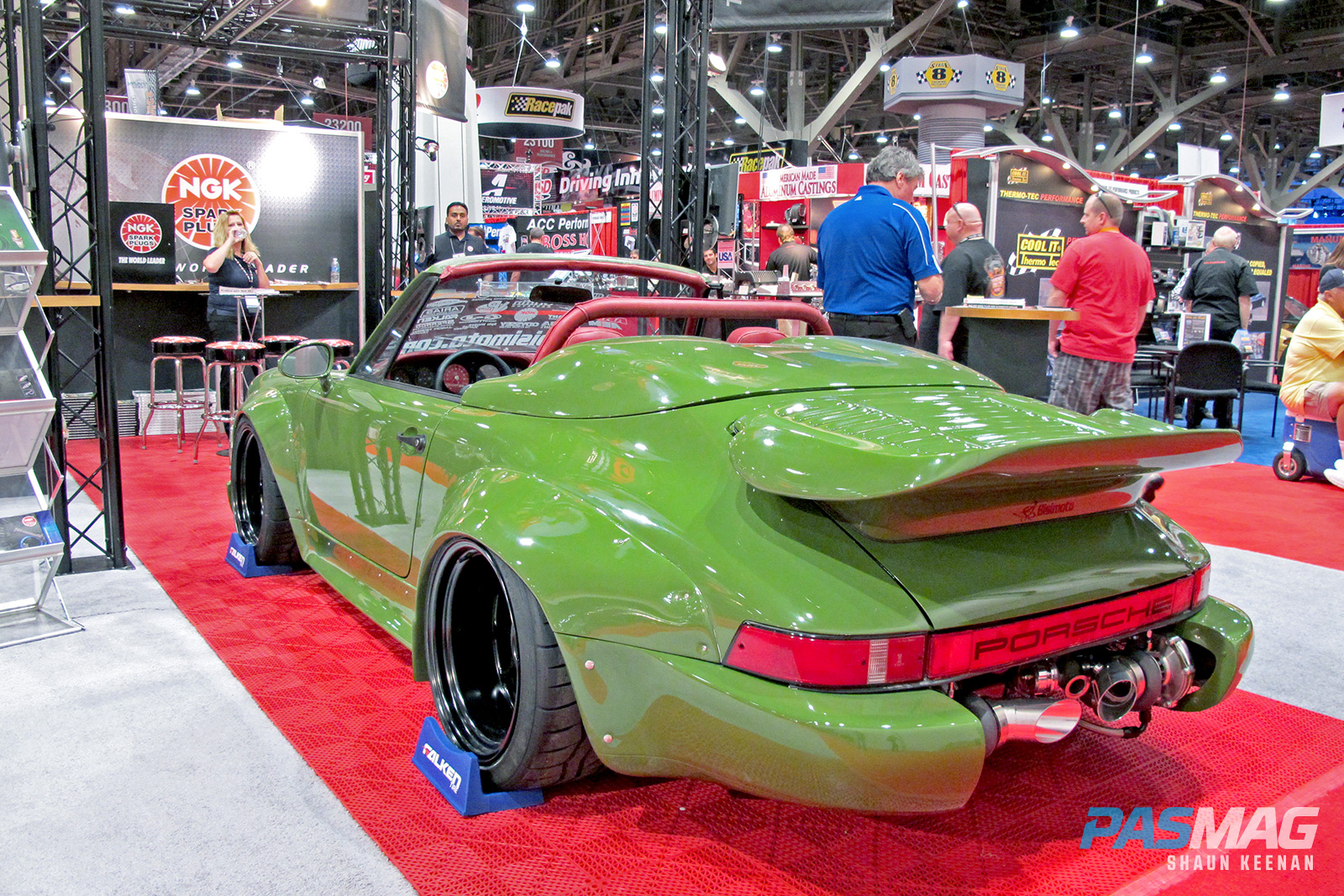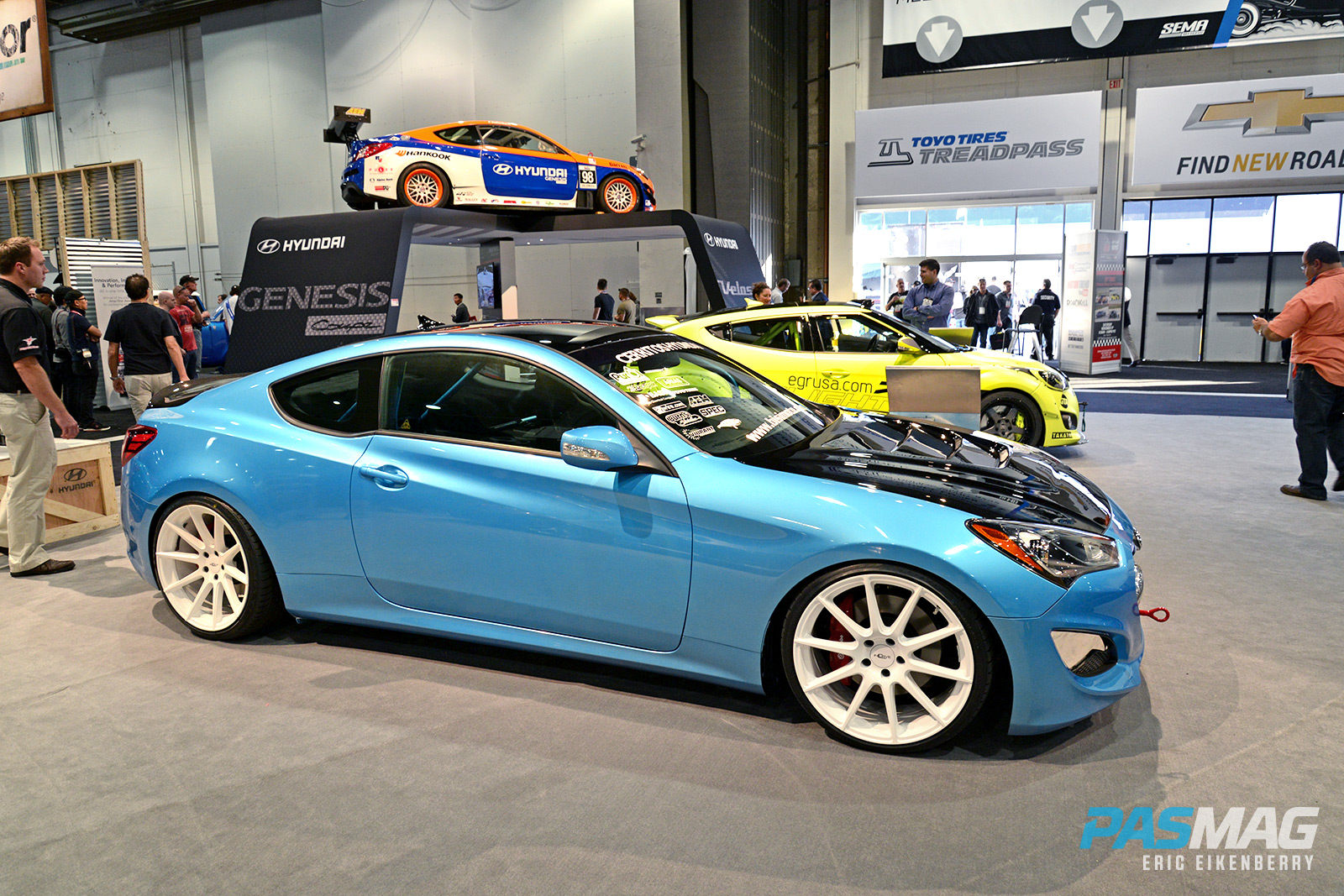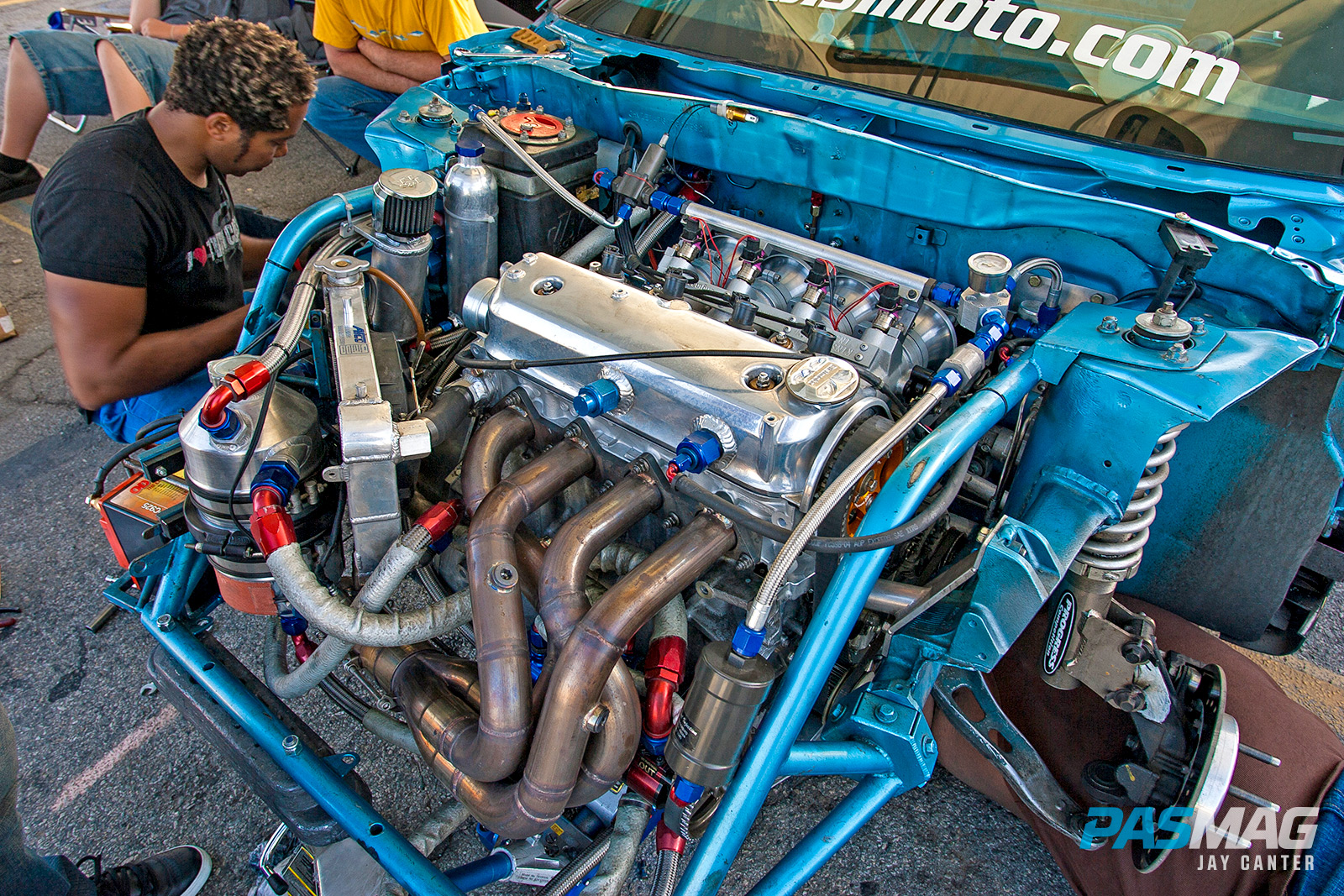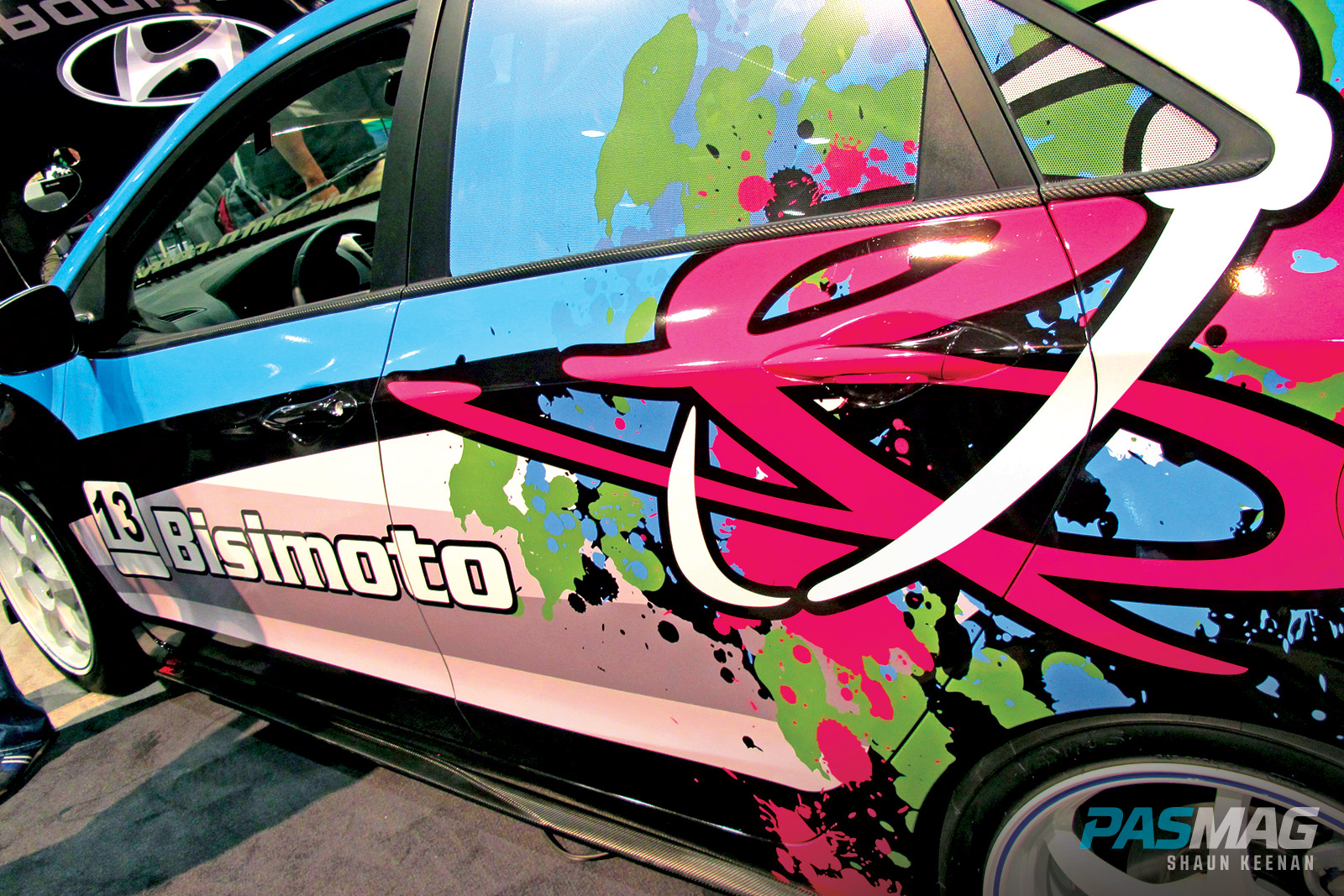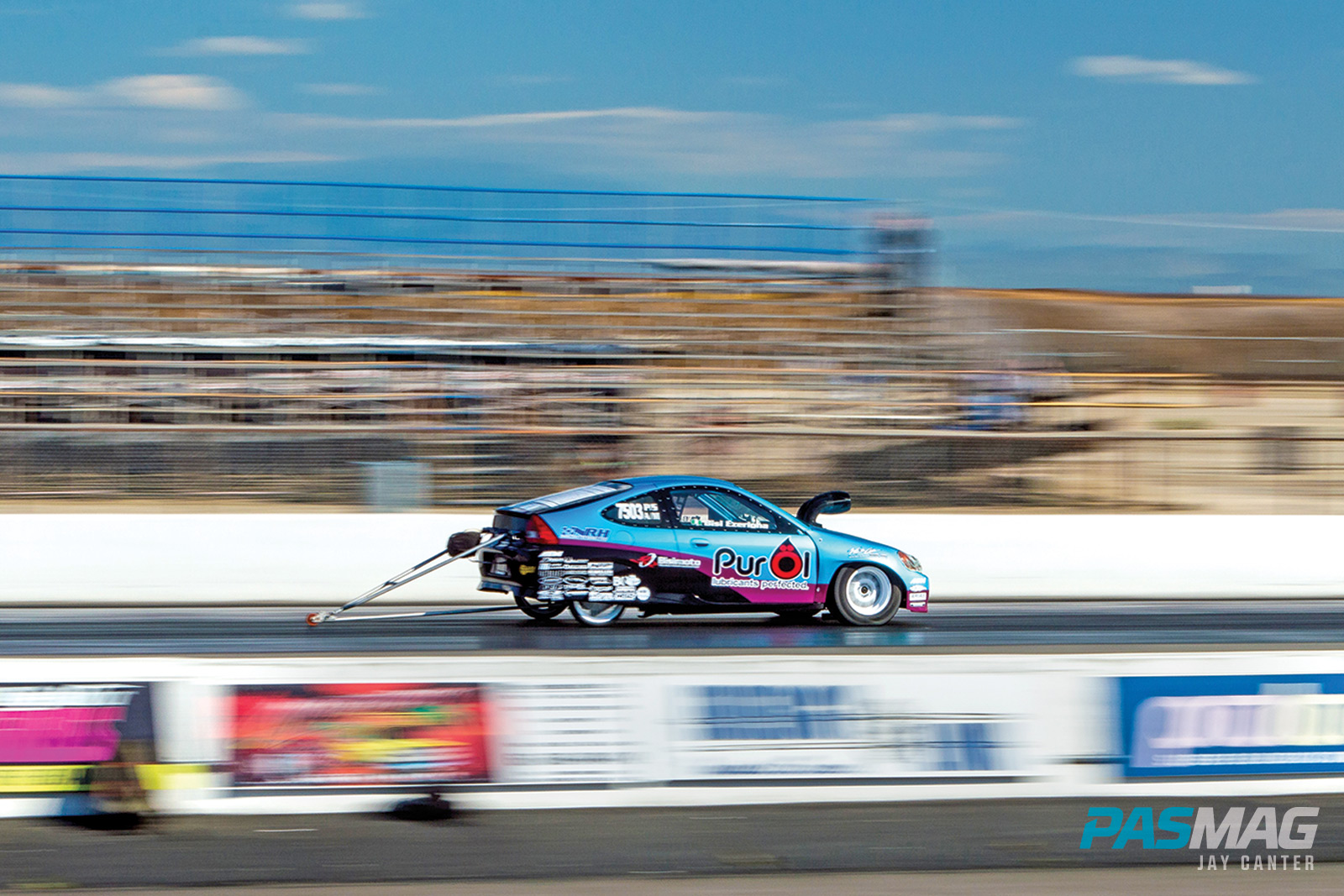Photos by Jay Canter & Shaun Keenan
Many would suggest that import tuning in North America was birthed in the cradle that is California.
A passion rose up out of the enthusiast community for these efficient and reliable cars. In the ’90s, however, domestics still reigned supreme and an aftermarket for imports was almost non-existent. Back then, when you wanted to go faster, you had to do it yourself. Fabricate your own parts, test them, break them and make them better to make you faster.
We at PASMAG are honored to have spoken with one of the forefathers of the import scene. One who not only sparked the Honda aftermarket, but who also influenced the emergence of other key players to the game. That man is Bisi Ezerioha.
Bisi’s story begins in West Africa, as he is originally from Nigeria. Raised by two scientist parents, he was influenced to chase his own career in the sciences. His mother was a biochemist and he says that that drove him to taking an interest in chemistry at a young age. Bisi accomplished a lot of things at a young age, actually.
“I did a lot of things very young, so I skipped a few grades,” he says. “I don’t know if it still holds in my country today, but I entered university when I was 16, the youngest ever. I took one year of petro-chemical engineering and didn’t really learn anything, so I came to the States like my parents did.”
He attended university in the U.S., following in his parents' footsteps and focusing on chemical engineering.
Aside from being a genius, Bisi was a lot like any of us growing up. He had an affinity for mechanical items and a fierce interest in cars, motorsport and going fast.
“In my chemical engineering curriculum, I always studied subjects that related back to motorsports or going fast in my cars,” Ezerioha explains.
“I always was a keen student in terms of thermodynamics, fluid dynamics and heat and mass transfer. All of those things were very important to me.”
After arriving in the U.S. and attending university, Bisi decided he needed a car to get back and forth to school. He knew the criteria that needed to be met: it needed to be reliable and it needed to be fuel-efficient. Since the Internet was not the information powerhouse it is today, car review websites weren’t available. So, Bisi went to the bookstore and bought a consumer report handbook and fell in love with three cars.
“I loved the look of the MR2 Turbo, but it was out of my range in terms of price as a student,” he recalls. “I loved the look of the Fiero; I wanted that car so badly, but the Pontiac Fiero didn’t have very high marks in terms of reliability, so that wasn’t good.”
“The CR-X, it was perfect,” gushes Ezerioha. “The HF version was a lightweight model that had very high fuel efficiency, had very high marks in terms of safety and reliability and it looked very sexy, so for me, that was the perfect car.”
Can you imagine Bisimoto Engineering’s flagship car being a Fiero? Yeah, we can’t either.
Bisi picked up his blue, 1988 CR-X for about $2,800 with 100,000 miles on it and no options. After a month or so of driving, he heard a noise coming from the rear of his new to him Honda. The muffler had decayed and, even though Bisi knew it wasn’t right, he loved the deep tone that came from his car. The dealer offered no help, so he went to a local muffler shop that dealt primarily in domestics. They suggested putting a Dynomax Ultra Flo muffler on it.
“It had this nice tone to it,” he recalls. “I felt a power increase and that was it; I was hooked. That got me thinking, ‘What could I do to extract more power from this?’”
And so it began. The mod bug had dug itself deep and Bisi had no complaints. He would go back to that same muffler shop and get them to fabricate an unrestricted air intake from exhaust piping, which he then fitted with an oversized K&N filter. Those were his first modifications to the CR-X, but that would prove to be a slippery slope.
A while after his new upgrades, Bisi had a life changing event that would prove to be a catalyst to his serious performance modifications. It took place in the large and always relatively empty engineering parking lot of California State University in Long Beach.
“One evening after class, I get in my CR-X and start it up,” Bisi recalls. “I was one of those guys who had the muffler, had the intake and I thought I was the fastest thing on planet earth. I was just so excited to have this intoxicating sound from the car.”
“Well, as I was pulling out, three girls came out and the owner of a CR-X that was a couple cars down from me was one of the girls in this group,” says Ezerioha. “They got into a CR-X Si and they pull out and I revved on them. She’s like, ‘What’s up?’ and I’m like, ‘Let’s do it.’ So, we just go at it in the parking lot and she smoked me! Like, destroyed.”
Sans his passenger seat, spare tire and two other occupants, Bisi really couldn’t figure out why he lost as badly as he did. He didn’t know about the differences in performance between his base HF CR-X and her Si.
“We get to the end of the parking lot and they’re laughing at me, just busting up,” winces Bisi. “I was so embarrassed. That day, I swore that I would have the fastest CR-X on planet earth. That was my declaration to the universe that I would be the fastest. Period.”
One of the first things that Bisi did, that no one else did, was explore carburetion. He was encouraged to chase this, as well as crazier designs to improve airflow, by a man named John Concialdi from AEM. Concialdi was an engineer as well and convinced Bisi to convert his CR-X from injection to carburetion to get more airflow and a finer mist of fuel in the engine. When Bisi completed the conversion, he saw a 12 percent increase in power, he never looked back.
The reason Bisi is so successful and accomplished in building and racing is because he views engines differently than everyone else. He views engines as energy converters.
“When I talk about energy converters, it’s simply chemical to heat to mechanical energy converters,” Bisi explains. “So, if we can harness the chemicals used – of course fuel and air – and then harness the heat of combustion properly, of which we lose over 40 percent to the cooling system and the atmosphere, we could harness that better in the engine to do work on pistons, which translates to mechanical energy through the crank. We can make a lot of power.”
The other unique view on engines that Bisi has is that he views all engines, whether Honda or Porsche, as the same. He isn’t daunted by any job.
“It takes the same effort, whether I’m building a Porsche 911 or a Honda Fit,” Ezerioha admits. “It’s the same materials in terms of pistons. I may have to buy two more – okay, big deal. It’s the same protocol in terms of engine management solutions. It’s the same in terms of almost anything you develop. In terms of tuning, it will take me two to three hours to tune a Civic. It will take me two to three hours to tune a 911.”
This was all learned at Brotherhood Raceway on Terminal Island in Long Beach, where Bisi sharpened his skills in research and development for modifications on his car. Knowing nothing about road racing, other than what he saw on TV, and having no friends with connections there, Bisi moved to the drag strip.
“I was there every weekend,” recalls Bisi. “I was there testing and trying things and that’s pretty much where I honed my teeth in drag racing. It was the only track I knew about. It was something that was very amazing for me. It was a precursor to Bisimoto Engineering.”
Brotherhood Raceway didn’t last long, unfortunately, and Bisi found himself going to another track in Carlsbad where he started to see the fruits of his labor. He started raising a lot of eyebrows because of how fast he was going. People wanted in on it.
“I went to the track and I got faster each week and people would come up and say: ‘Hey, how are you this fast; what did you do?” And I said, ‘Oh, I did this to my car.’
‘Oh, could you do it for me?’ “Sure.”
Before he knew it, Bisi had graduated university with a degree in chemical engineering. From there, he got into pharmaceutical research and made quite a bit of money there, as well as making money by selling his creations at the track. In the time after Bisi graduated, B-series swaps became a huge way of making power out of a smaller chassis that was originally armed with a single-cam engine. After being called out by teams he had tuned himself, Bisi grew tired of the big-headedness and decided it was time to draw up a new powerplant. He stumbled across his new engine in the junkyard one day.
“I see this engine at the wrecking yard and it looks like my D-series, but way bigger,” he remembers. “Here I have a D-series looking engine with huge ports, better ports than I’ve ever seen on anything.
“I took note of the engine code: F22A,” recalls Bisi. “I went back home that evening and I started designing. It’s pretty much exactly what I did on my D-series: de-stroking, crazy head porting, aggressive cam design. Everything larger; header design, length wise, everything perfect.”
Getting that perfect F22A into his CR-X was going to be a challenge. He had just shelled out $1,700 on a Mugen final drive and didn’t want to see his investment go to waste. He needed a way to match an F-series engine to a D-series transmission. This is where one of Bisi’s most revolutionary inventions came to light: the adapter plate.
“I submitted a design to Arias and had them cut me my first adapter plate, with dowels on both sides,” he explains. “One side was like an F/H motor and the other side was like a D-series transmission. It started up beautifully, so I didn’t have to do anything crazy, but make one driver side mount. It was very simple; I didn’t have to do anything crazy with the ignition system or fuel system because it was all carbureted.”
Up to that point, Bisi had been running 10.8 second runs at the strip. When he took his newly transplanted CR-X to the track, he ran a 10.23 on his very first run. This same setup would form the basis of his 2006 IDRC Honda Insight drag build. Bisi then added adapter plates to the products he sold.
In 2006, he left his pharmaceutical job to dedicate his passion to his livelihood and opened to doors to his shop, Bisimoto Engineering. Through this, he could officially sell parts to enthusiasts, instead of at the track. Since then, he has outgrown two locations, and says that Bisimoto is outgrowing their third location now as well.
The biggest problem that came with opening his own shop and offering parts globally was the knock-offs that came from his popular products.
“I have a very unique exhaust header design,” says Bisi. “It’s patented, but it’s also my most knocked-off product. I do go after companies, but they always go away and come back with a different name.”
“There are some companies who’ve just made their name by knocking off other people,” Bisi continues. “What that has done is pushed people like us away from the scene.”
Bisi has found business more lucrative among some of his higher-end market clients, specifically Porsche owners. Porsche owners wouldn’t even think of using or supporting a knock-off part. Sadly, this is being seen with other pioneers of the scene.
“You see people like Kenny Tran moving away from Hondas and getting into Skylines,” explains Ezerioha. “You see the same thing with all of us who pioneered things or who are very creative. We are leaving the market and going to higher-end markets because of certain people who are out there to destroy us by copying and knocking off.”
With that said, it’s no surprise that his first piece of advice to people just entering the scene is to not take shortcuts with your car and use quality parts and products.
“In the long run, it will be cheaper for you, seriously,” advises Bisi. “There’s this huge exodus with the younger crowd. The younger performance crowd leaves high performance, reliable products to go to something that is cheap to get instant gratification.”
The second piece has to do with misinformation on the Internet and from your peers. Make sure you get your information from credible sources.
“Peer support is fine and dandy, but when you are building a project car that you want to enjoy, you should really seek advice from people who’ve done it,” says Bisi. “People who’ve proven themselves, not from your peer group. Especially those who don’t even have cars or have never built anything in their lives.”
What about if you want to get a bit more power out of your engine and you don’t want to spend a load of cash? What are some cost-effective ways of squeezing out some more juice? Bisi’s answer may shock you.
“Believe it or not, the most cost effective addition I’ve seen in terms of performance is simple motor oil,” laughs Ezerioha. “There’s a lot of power in oil, it’s frightening. Some people see it as a commodity, but it is not. Aerospace companies have known this for years and it’s gradually trickling into the motorsports arena.”
“I use Purol as an oil, which comes from the aerospace industry, and I see significant gains in power,” says Bisi.
Bisi parks two Porsches in his driveway: a Cayenne Turbo for when he has to pick up supplies, and a 1989 911. So, when we asked him what his dream car would be, and if he’d modify it right away, his answers weren’t surprising.
“I would love to have a 918 Spyder,” he gushes. “Oh, I would go to town. It’s already a magnificent machine from the factory, but I would totally scope the entire vehicle and find ways to improve on what’s already there.”
“It would not be stock, not for long,” continues Ezerioha. “Oh my god, I probably won’t even go home for the first two days after getting it.”
After his CR-Z build in 2010 for Honda, Bisi has been fascinated with hybrid technologies and working with them to produce more power, in a reliable way. Does that mean that Bisi will go all-in on hybrid technologies in 2015? Not at all.
“The diesel world, that seems to be the next frontier for me,” reveals Bisi. “Diesel is a fascinating fuel and the diesel engine leaves a lot on the table. When we talk about turbo diesel, oh my goodness. Everyone can stay tuned, I’m going to start playing around with some TDI stuff.”
With more promising projects to come from Bisimoto in the OEM realm and six brand-new builds debuting at SEMA this year, Bisi Ezerioha shows no sign of slowing down. Although his heart is with Honda, maybe he will be the catalyst to our alternative fuel aftermarket future.
Related Articles
 Bisimoto x Kyza Porsche 935 Moby X Preview
Bisimoto x Kyza Porsche 935 Moby X Preview
 PASMAG Garage of Isolation: Bisi Ezerioha of Bisimoto Engineering
PASMAG Garage of Isolation: Bisi Ezerioha of Bisimoto Engineering
 Keeping It Fresh: Tjin Edition's 2015 Hyundai Genesis Coupe RS
Keeping It Fresh: Tjin Edition's 2015 Hyundai Genesis Coupe RS
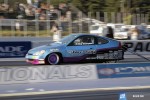 Getting Bisi: Honda Insight
Getting Bisi: Honda Insight


